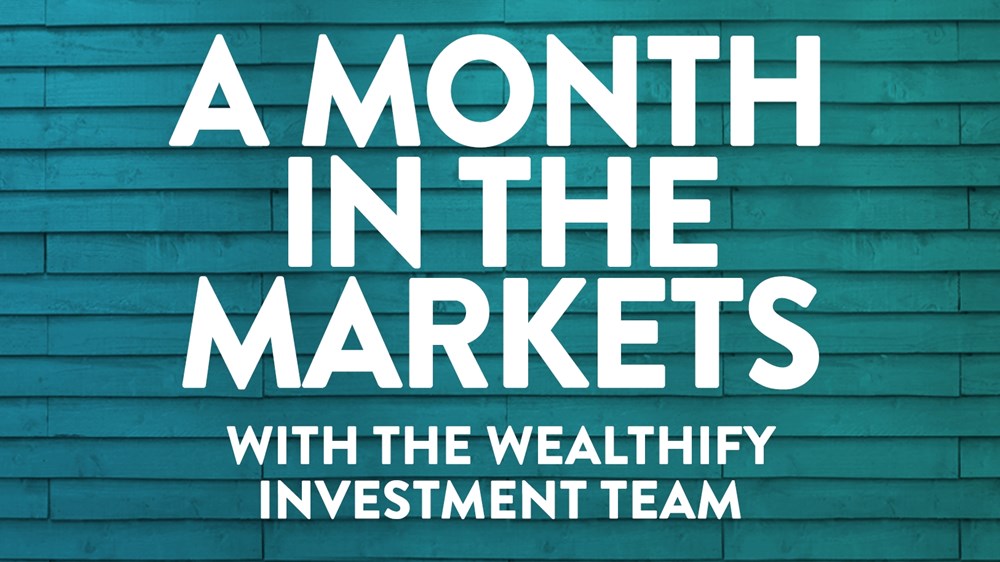With the first half of the year behind us, we need to reflect on what has been one of the most difficult six months for developed market shares in 50 years.
Shares typically drive growth in Plans, but by their very nature, they are vulnerable to periods of negative returns, which we have witnessed in 2022. Normally, when this happens, investors look to bonds to help protect their hard-earned savings. But this hasn’t been the case this time around. Bonds have also been hit hard this year, so they’ve failed to shield diversified investors from the pain of falling investment values.
June has further cemented 2022 as a testing year. But there are always silver linings, even in these difficult times. Joblessness remains extremely low and healthy, with UK unemployment at 3.8% while job vacancies continued to hit record levels, with UK employers advertising 1.69 million jobs in mid-June.
Another sign of strength in the underlying economy is the healthy activity numbers. Data released in June (for May) showed that the UK manufacturing sector saw a slight decline, while the UK services sector experienced a bit more softening but still came in ahead of expectations. Despite these declines, both measures are at healthy levels.
Another potential positive is that assets are now decidedly cheaper. Yes, they may fall further, but patient investors who have a consistent strategy could be rewarded in the long run.
Inflation remains at the heart of the worries across the developed world, which essentially sets the global tone in terms of interest rates. Of all central banks, the US Fed has the most bearing on international economies and markets, with its decisions having ripple effects far and wide as the US dollar is the world’s only established reserve currency. This is important, as the US Fed raised interest rates by 75bps in June – the biggest rise in nearly 30 years – indicating the seriousness with which it intends to tackle the spiralling price problem in the world’s largest developed economy. This move was larger than what the bank had guided on and has continued the trend of uncertainty in financial markets as investors scramble to price in even steeper interest rate expectations.
The multi-decade inflation highs we are experiencing come from a near-perfect storm of factors. We’ve seen a strong post-covid-19 recovery being met by restricted supply. In situations where demand is strong but supply falters due to unforeseen events, such as Russia’s invasion of Ukraine, we have the potential for increased inflation. Added to this, we have also had massive supply chain disruptions which have failed to subside due to the existing covid-19 bottlenecks and the ongoing disruptions of China’s covid-zero policy. The latter has seen large swathes of economically sensitive areas under strict lockdowns. The negative impacts of this policy and Russia’s ongoing invasion of Ukraine seem here to stay, although we are more likely to see an end to the covid-zero policy in the near-term before we see an end to the highly upsetting war in Ukraine.
It’s worth mentioning that having these factors come all at once is rather rare and should be seen as such.
Data released in June showed that UK inflation continued to climb in March, up from 9.0% to 9.1% year on year (yoy), reaching yet another 40-year high. This reflects a real-term increase in the prices of goods and services which many people are feeling the effects of.
As these factors have come together, and central bankers have become increasingly involved in the fight for price stability, the threat of recession has been rising. The good news is that the global economy remains in relatively good shape when considering actual growth, which is slowing as expected, as well as the strong labour markets. A short and shallow recession would not be the end of the world, and central banks certainly have the power to restimulate the economy should this happen. In addition, the inflation numbers, which are calculated on a YoY basis, are bound to start easing as the higher bases creep in and lower bases creep out. Prices, however, may remain elevated in certain areas which will limit growth.
Markets
Stock markets had a difficult time in June, with most markets ending the month in negative territory, as the global economy reacted to the recessionary risk and high inflation rates.
The -8.6% US dollar return from the MSCI All Country World Index, which includes both developed and emerging markets, indicates what a difficult month it was for global share markets.
Within developed markets, the US, which is the largest share market by value, was the main driver of negative returns. The S&P 500 declined 8.4% in June. We saw similarly negative returns in the UK unfortunately, as both the FTSE 100 (-5.7%) and FTSE 250 (-8.6%) declined in value. Elsewhere we also saw share markets in Europe (-8.2%) and Japan (-5.3%) fall last month.
Emerging markets (-7.1%) failed to buck the trend but fared slightly better due to some long overdue positivity in the Chinese share market, driven by some easing of covid-19 lockdowns and regulatory issues facing tech companies.
Currency
Sterling performance against major currencies was mixed over the course of June, driven mainly by actual and expected interest rate differences, as well as investor sentiment. Testament to this was the loss in value against the US dollar (-3.5%) and euro (-1.1%) where steeper rate hikes came into play. It is generally understood that with a weaker growth outlook and falling confidence in the political regime, the Bank of England will have less room to increase rates. These moves were mostly positive for US and European share exposure.
UK interest rates will still have to rise to combat the threat of inflation, which was the driver of sterling’s strength against the Japanese Yen (+1.9%). The trajectory of interest rates is expected to be greater in the UK than in Japan, where economic growth and inflation remain subdued.
Investment type performance breakdown
In our Original Plans, we saw rising recessionary risks in an environment of elevated inflation and rising interest rates cause negative returns across all major asset classes. Shares (-6.7%) and property (-5.3%) were notably down, while bonds (-1.5%) were spared somewhat. We saw a similar performance in our Ethical Plans in June, with shares (-6.1%) and bonds (-2.0%) ending the month in negative territory.
Over the course of the year, we have seen a large divergence in the performance in shares in Original and Ethical, with our Ethical Plans having markedly lower performance. Shares held in the Ethical Plans have been negatively impacted by the continued trend of value shares outperforming growth shares (growth shares are in companies that have the potential to outperform the overall market over time due to their future potential, while value shares are companies that are currently trading below their ‘true’ worth). We remain confident in the long-term prospects of these sustainably managed and focused companies.
Summary with Plan details
Disappointingly, June was another negative month for all our Investment Plans in both Original and Ethical themes. This was largely driven by downward market volatility, particularly in the share market. Plans with higher exposure to shares and property, such as our Ambitious and Adventurous Plans, underperformed Plans with higher exposure to bonds, such as our Cautious and Tentative Plans. This held true in both the Ethical and Original Plans.
Our Investment Team continues to actively monitor the financial markets and their impact on your Plan, and as always, we are ready to act in your best interests to events as they unfold. We are continually evaluating new market information and the key drivers in markets to ensure your Plan stays on track. Markets remain uncertain and treacherous in the present moment, with many pathways in play. Our goal is to stay the course while seeking diversification to weather and take advantage of the short-term storm to set your Plan up for long-term success.
As always, we continue to look for opportunities to position your investments with the goal of protecting your money and achieving your long-term objectives.
Please remember the value of your investments can go down as well as up, and you could get back less than invested. Past performance is not a reliable indicator of future results.



